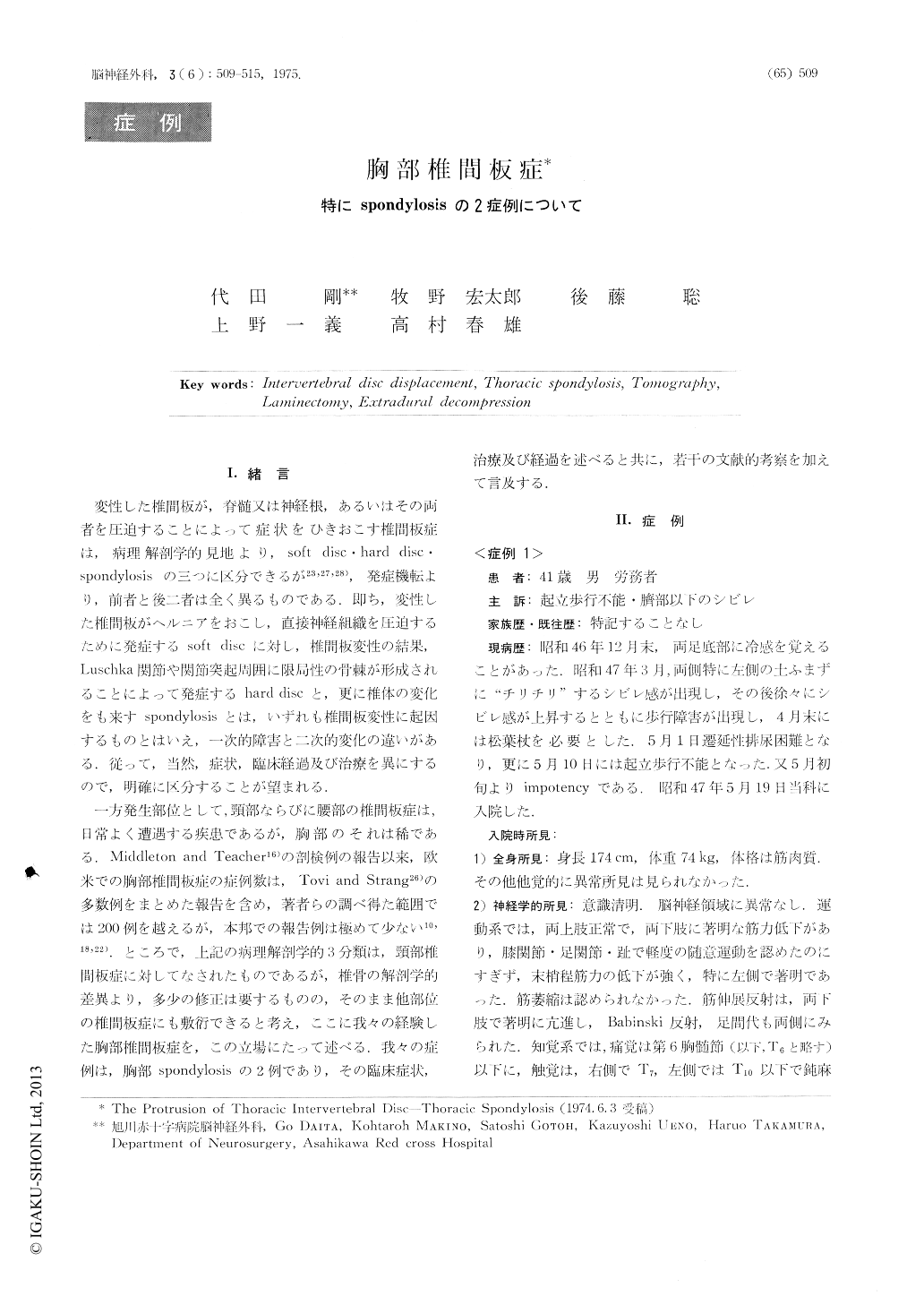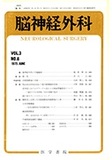Japanese
English
- 有料閲覧
- Abstract 文献概要
- 1ページ目 Look Inside
Ⅰ.緒言
変性した椎間板が,脊髄又は神経根,あるいはその両者を圧迫することによって症状をひきおこす椎間板症は,病理解剖学的見地より,soft djsc・hard disc・spondylosisの三つに区分できるが23,27,28),発症機転より,前者と後二者は全く異るものである.即ち,変性した椎間板がヘルニアをおこし,直接神経組織を圧迫するために発症するsoft discに対し,椎開板変性の結果,Luschka関節や関節突起周囲に限局性の骨棘が形成されることによって発症するhard discと,更に椎体の変化をも来すSpondylosisとは,いずれも椎間板変性に起因するものとはいえ,一次的障害と二次的変化の違いがある.従って,当然,症状,臨床経過及び治療を畏にするので,明確に区分することが望まれる.
一方発生部位として,頸部ならびに腰部の椎間板症は,日常よく遭遇する疾患であるが,胸部のそれは稀である,Middleton and Teacher16)の剖検例の報告以来,欧米での胸部椎間板症の症1列数は,Tovi and Strang26)の多数例をまとめた報告を含め,著者らの調べ得た範囲では200例を越えるが,本邦での報告例は極めて少ない10,18,22).
The protrusion of cervical intervertebral discs was divided into three pathological entities by Spurling; soft disc, hard disc and spondylosis. We applied these concept to the dorsal intervertebral disc disease and treated two cases of thoracic spondylosis.
Case 1. A 41-year-old male entered the hospital because of the gradual progression of weakness of both legs of two months' duration. Since ten days before admission he had not had an errection and had not been to able to walk and micturate. He also complained of paresthesia radiating down the abdomen into both legs.

Copyright © 1975, Igaku-Shoin Ltd. All rights reserved.


